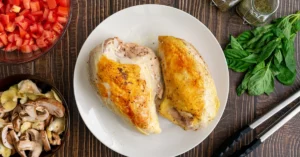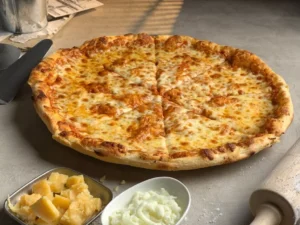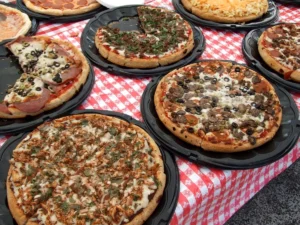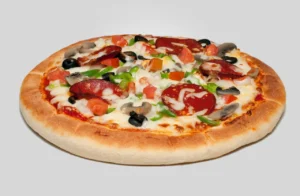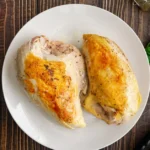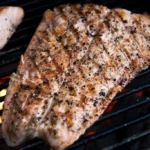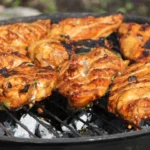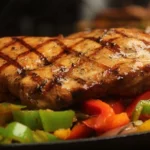In the world of cooking and baking, precise measurements are crucial for achieving consistent and delicious results. However, for converting between different units of measurement, things can get a bit confusing. And this confusion most commonly occurs when you need to divide your recipe or simply don’t have the required measuring tools like a measuring glass, cup, or scale.
In such situations, one common question that often arises is, “How many tablespoons are there in one ounce?”
In this blog post, you’ll understand this conversion conundrum most simply and get a well-informed answer.
Understanding Tablespoons and Ounces
Before we dive into the conversion, let’s briefly explore the basic concepts of tablespoons and ounces.
A tablespoon (often abbreviated as “tbsp”) is a unit of volume commonly used in both cooking and serving. On the other hand, an ounce (abbreviated as “oz”) is a unit of weight or mass.
In cooking, tablespoons are typically used to measure ingredients such as spices, liquids, and smaller quantities of dry ingredients.
Conversely, ounces are often used to measure larger quantities of liquid and dry ingredients and in certain culinary contexts for weight-based measurements.
Let’s Start with Converting Tablespoons to Oz for Liquids
Now, let’s tackle the main question: how many tablespoons are there in one ounce?
The answer depends on the substance being measured, as different ingredients have different densities and, thus, can vary in volume-to-weight ratios when you change conversion from one ingredient to another.
However, for most cooking and baking purposes, a general conversion guideline for liquid ingredients is used:
- 1 fluid ounce (fl oz) equals approximately 2 tablespoons (tbsp).
You can reliably convert the same ingredient into tablespoons since you measure the liquid ounces with a measuring glass or cup.
Oz to Tablespoons US Conversion Chart for Liquids
Here’s a handy table that provides conversions from ounces to tablespoons for common cooking and baking purposes. When your recipe defines the measurements in ounces, and you want to convert them into tablespoons, you can confidently follow this table for liquid ingredients.
| Ounces (oz) | Tablespoons (tbsp) |
| 1 oz | 2 tbsp |
| 2 oz | 4 tbsp |
| 3 oz | 6 tbsp |
| 4 oz | 8 tbsp |
| 5 oz | 10 tbsp |
| 6 oz | 12 tbsp |
| 7 oz | 14 tbsp |
| 8 oz | 16 tbsp |
| 9 oz | 18 tbsp |
| 10 oz | 20 tbsp |
| 11 oz | 22 tbsp |
| 12 oz | 24 tbsp |
| 13 oz | 26 tbsp |
| 14 oz | 28 tbsp |
| 15 oz | 30 tbsp |
| 16 oz | 32 tbsp |
How about Converting Tablespoons to Oz for Dry Ingredients?
It’s pretty common to find recipes mentioning the dry ingredients in ounces as well. Can you convert dry ingredients into tablespoons so smoothly?
The answer is “NO.”
WHY?
You might hear many others saying that 1 ounce of dry ingredients equals 4 tablespoons.
THAT IS NOT TRUE, DEAR.
STOP BELIEVING IT!
The density of dry ingredients makes them weigh differently, and when a recipe specifies it in ounces, it doesn’t mean to be measured using a measuring cup or glass. Instead, when the recipe tells a dry ingredient to be in an ounce, it simply means “28” grams of it.
And each tablespoon for every dry ingredient will weigh differently. Here, honestly, you need some accurate kitchen scale to half your ingredients if you cook in a kitchen every day.
Oz to Tablespoons US Conversion Chart for Liquids
But, if you’re packed with time, and can’t wait for a kitchen scale, here is a handy table for converting dry ingredients to tablespoons according to US measurements. Please note that each ingredient in this table is one ounce.
| Ingredients | Semolina flour | Tablespoons in 1 Oz/28 grams of dry Ingredient |
| “00” pizza flour | 116 grams | 4 tbs |
| All purpose flour | 120 grams | 3 ¾ tbs |
| Almond flour | 112 grams | 4 tbs |
| Artisan bread flour | 120 grams | 3 ¾ tbs |
| Barley flour | 85 grams | 5 tbs |
| Bread crumbs (dried) | 112 grams | 4 tbs |
| Bread Crumbs (fresh) | 84 grams | 5 tbs |
| Bread Crumbs (Japanese Panko) | 50 grams | 9 tbs |
| Butter | 113 grams | 4 tbs |
| Chocolate chips | 177 grams | 2.5 tbs |
| Cheddar cheese (grated) | 113 grams | 4 tbs |
| Parmesan cheese | 100 grams | 5 tbs |
| Cheese Ricotta unshredded | 227 grams | 2 tbsp |
| Cocoa powder | 90 grams | 5 tbs |
| Corn starch | 72 grams | 6 tbs |
| Cream of coconut | 282 grams | 1 ½ tbs |
| Coconut flour | 256 grams | 1.75 or 1 ¾ tbsp |
| Cocoa powder | 90 grams | 5 tbs |
| Cinnamon sugar | 200 grams | 2 ¼ tbs |
| Flour | 125 grams | 3 ½ tbs |
| Rice flour | 142 grams | 3 tbs |
| Rice | 99 grams | 4 ½ tbs |
| Oatmeal | 100 grams | 4 ½ tbs |
| Oat flour | 92 grams | 5 tbs |
| Quinoa whole | 177 grams | 2.5 tbs |
| Quinoa flour | 110 grams | 4 tbs |
| Sparkling sugar | 128 grams | 3 ½ tbs |
| Semolina flour | 163 grams | 2.75 tbs |
| Sour cream | 240 grams | 2 tbs |
| Sugar | All-purpose flour | 2 ¼ tbs |
| Sugar (brown) | 220 grams | 2 ¼ tbs |
| Sugar (powdered) | 115 grams | 4 tbs |
| Baking sugar (alternatives) | 170 grams | 2 ½ tbs |
| Whole milk | 240 grams | 2 tbs |
| Whole wheat flour | 130 grams | 3 ½ tbs |
How did I do this conversion?
Here’s how:
- Any standard measuring cup equalizes 16 tablespoons.
- Any cup of dry ingredients weighs differently, but when divided by 16 (for tablespoons), it gets how much 1 tablespoon should weigh for the given ingredient.
- Thus, you can divide the standard weight of 28 grams for a dry ounce by the obtained tablespoon weight for the given ingredient.
Below is an example of a few ingredients to help you understand how I’ve made the entire conversion table for you.
| Ingredients | For 1 cup | All-purpose flour | Divide 28 grams by the obtained weight of 1 tablespoon |
| All purpose flour | 120 grams | 120/16 = 7.5 | 28/7.5 = 3 ¾ tbs |
| Sugar | 200 grams | 200/16 = 12.5 | 28/12.5 = 2.25 or 2 ¼ tbs |
Note
For the ingredients you can’t find in this table, you can do the exact conversion by knowing the weight of your ingredients per cup. But for that purpose, you must get a good quality, accurate kitchen scale.
Final Thoughts
Understanding the relationship between volume and weight is key when converting tablespoons to ounces. While the general rule of thumb of 1 fluid ounce equaling approximately 2 tablespoons can be a useful guideline, it is important to consider the density of the substance being measured to achieve accurate results.
Remember, precision matters in the world of cooking, especially when it comes to certain recipes requiring exact measurements. So, if you want to ensure consistent and delicious results, take the time to double-check your measurements and, when needed, rely on more specific conversion references or kitchen scales to achieve the desired outcome.
Happy cooking and baking!
